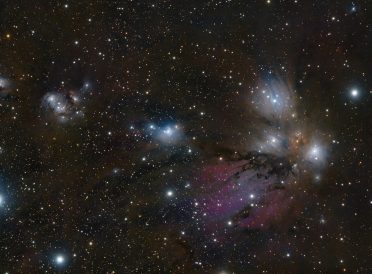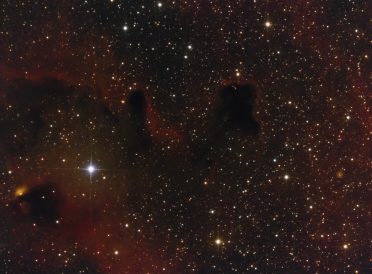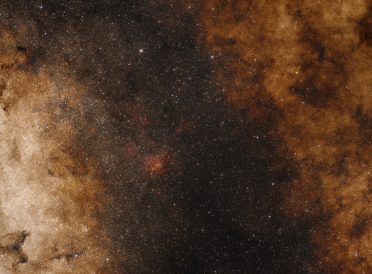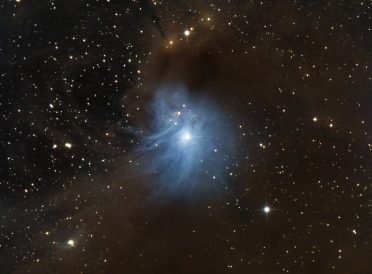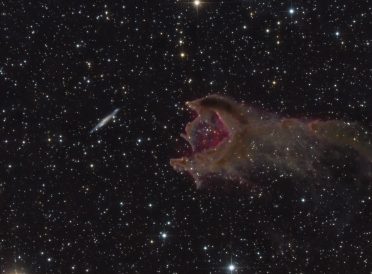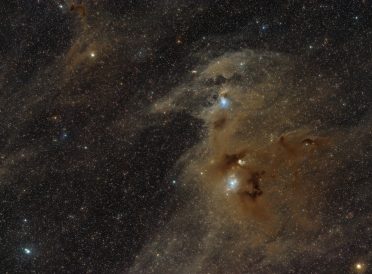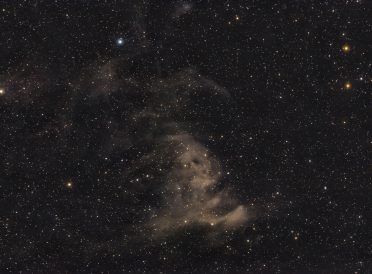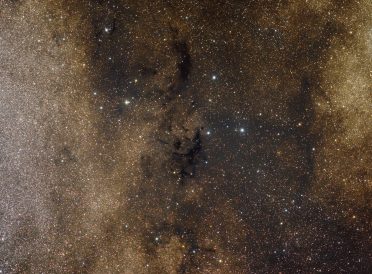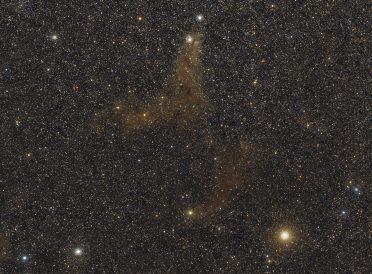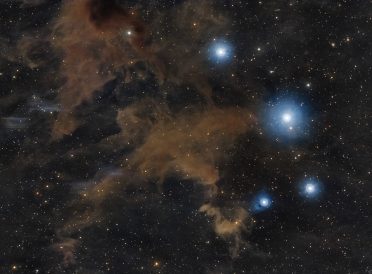Molecular Clouds / Dark Nebulae
The densest regions of the interstellar gas and dust clouds contain particles up to a size of 1 μm. In addition to the most abundant elements in the universe, hydrogen and helium, these clouds contain a variety of molecules, e.g., water, silicates, CO2 and other carbon compounds.
In the visual spectrum, molecular clouds absorb light from the stars behind them and are visible as irregularly shaped dark nebulae against the background of the bright Milky Way. Molecular clouds can also be illuminated by the surrounding stars or even by large parts of the Milky Way and then appear as very faint reflection nebulae, e.g. as galactic cirrus.


